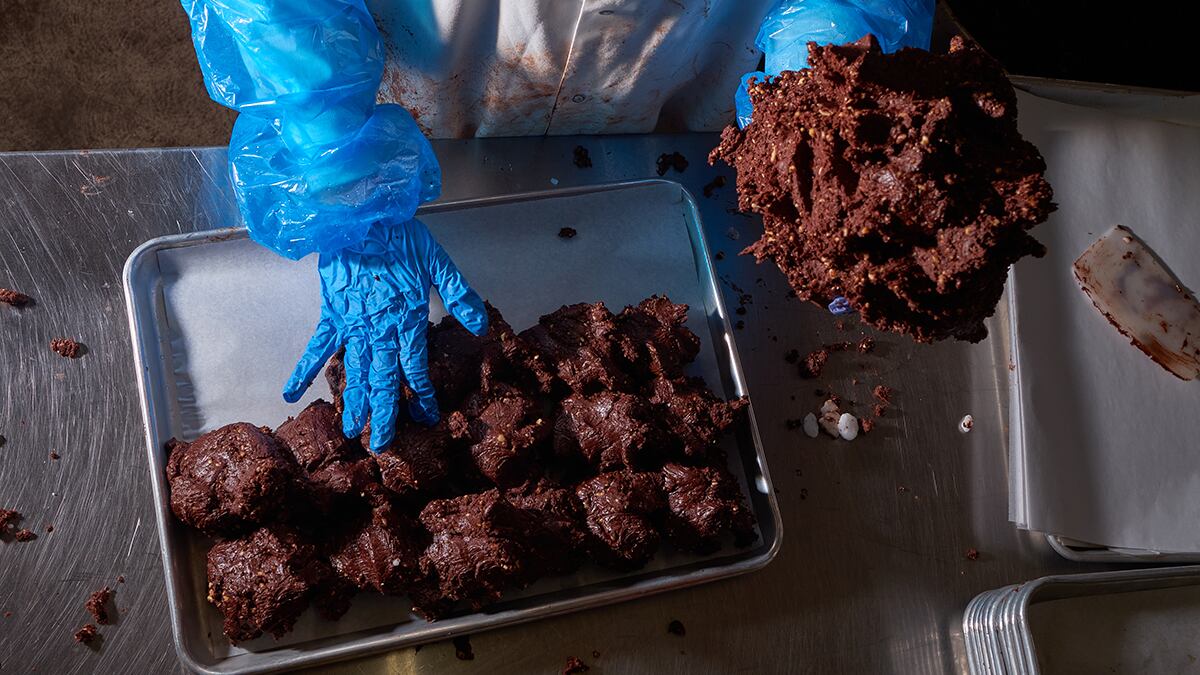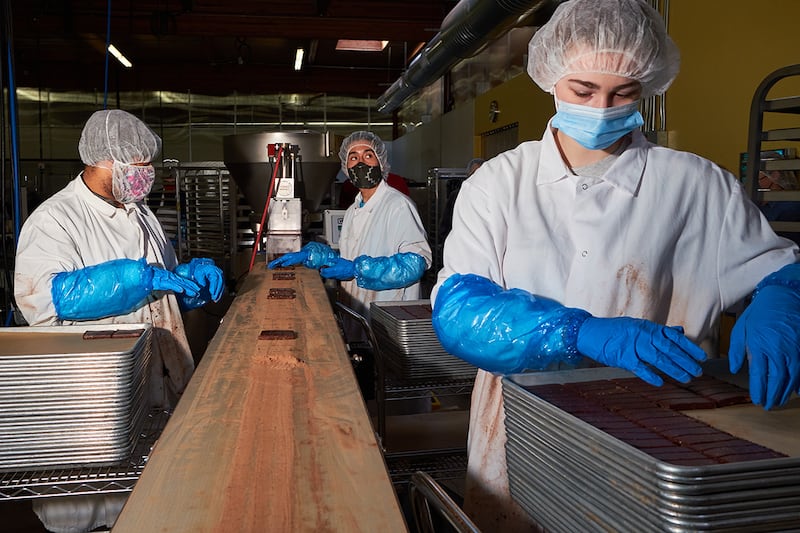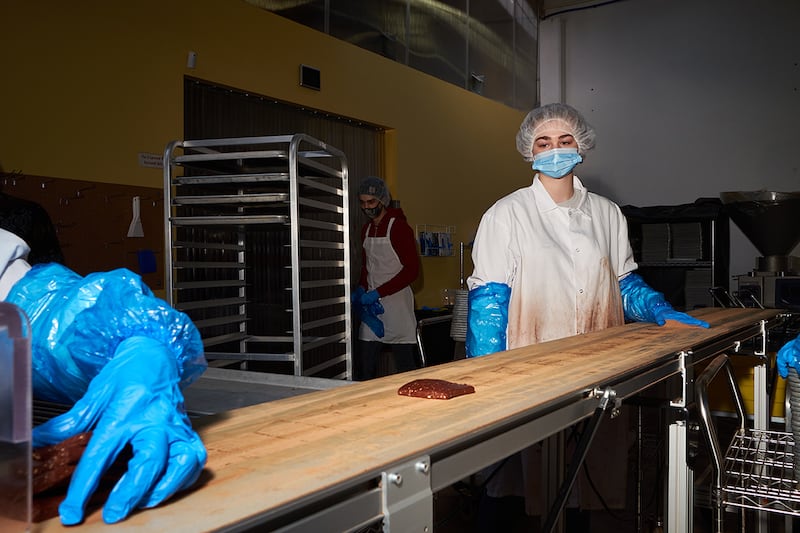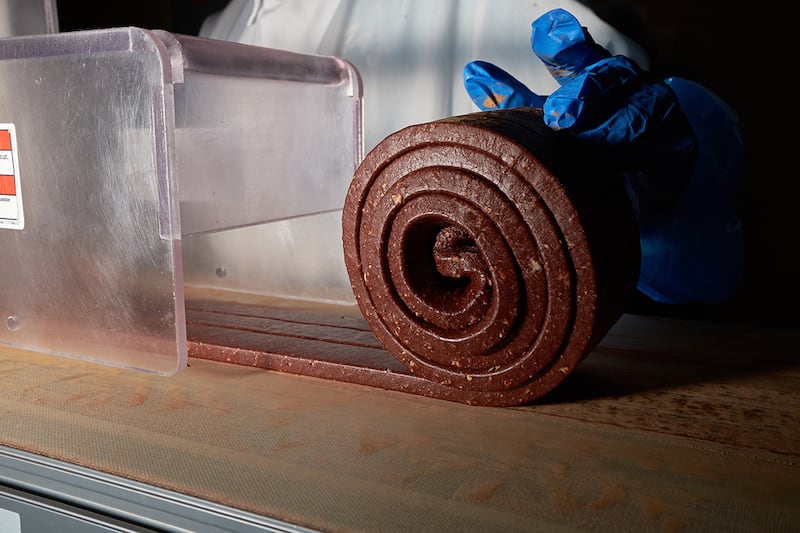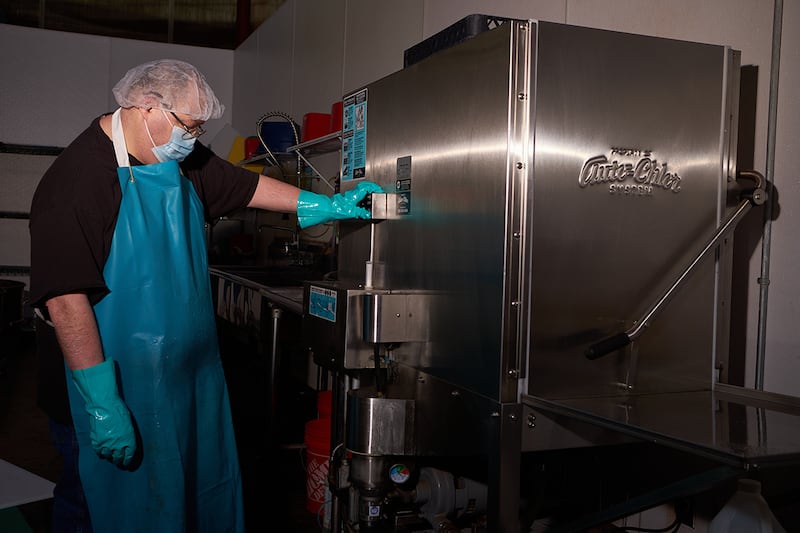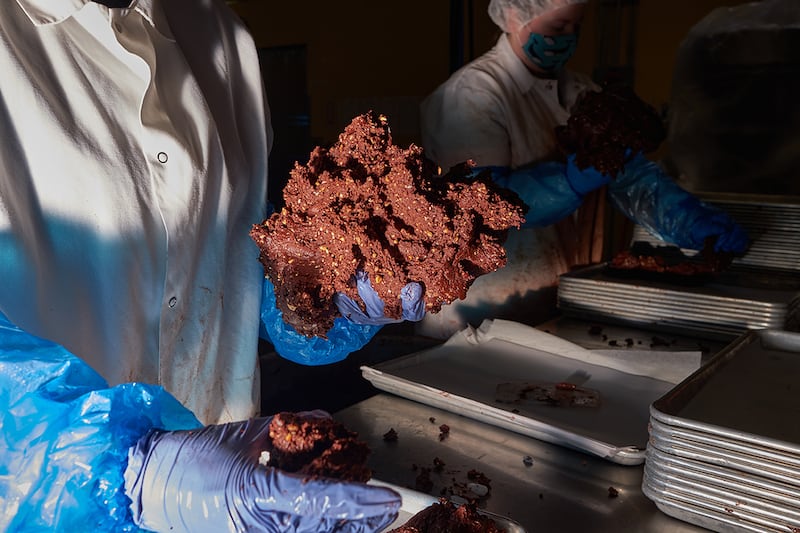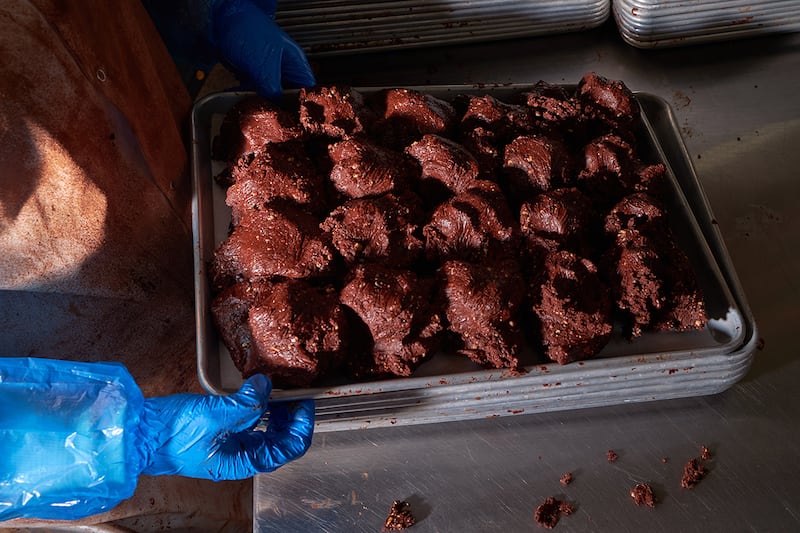At the Honey Mama’s factory on North Williams Avenue, production workers double as DJs.
Each day, it's another employee's turn to mash up the whirs of a centrifuge and the periodic slice of a guillotine with a curated queue of beats. The songs maintain pace, energy and morale in the production kitchen, where the brand's health-forward cocoa truffle bars are churned out.
"Music completely affects the mood and tone of any experience," says Honey Mama's founder Christy Goldsby. "We have always had music in the manufacturing space as a bridge to connect the team."
Since 2017, that space has occupied a full square block at the corner of Williams and Northeast Tillamook Street. Commuters who rip past the warehouse on bikes and buses each day are sure to miss the innocuous gray-green box to their right. Until recently, it had no sign indicating what was being made inside—Goldsby was concerned that announcing Honey Mama's presence might actually lead hungry consumers to the factory doorstep.
It took Goldsby four years to graduate to this 12,000-square-foot facility. When she made her first bar in 2013, she was renting hours at a bakery and sharing iterations of the hand-pressed treat with her aerobics class. That year, she sold 24,000 bars in coffee shops, co-ops and farmers markets. By 2017, she expanded to a team of 20 employees and sold 500,000 bars across the Western U.S. In 2020, sales climbed to 2.5 million bars across the nation with each bar retailing for $5.99.
The company is now up to 40 employees. But the core ingredients remain the same as Goldsby used in 2013. Each Honey Mama's bar contains raw honey, coconut oil, alkalized cocoa powder, Himalayan pink salt and some sort of fatty, thickening binder. In the earliest rendition of the bar, sprouted almonds gave form to "Original Dutch," a rich chocolate flavor that warms the throat and has pockets of crunch, like biting into the crystals of a good Parmesan cheese. When the brand expanded to meet the needs of non-nut eaters, it chose coconut meat to bind flavors like "Ginger Cardamom." Recently, the company experimented with ground sesame seeds.
Honey Mama's latest flavor, "Tahini Tangerine," tastes like an orange sherbet Push Pop. It's the ninth flavor in Honey Mama's arsenal, which is devised across the street from the factory in a Craftsman-style house, where bedrooms serve as corporate offices and a residential kitchen countertop as the R&D lab. When a winning flavor is identified, the bar is turned into reality back at the factory by a team of production workers, QA specialists, and operational efficiency professionals.
"I love process engineering—figuring out how to make things faster, more efficient and safe," says Melody Doris, Honey Mama's director of manufacturing.
One Monday morning, workers mix and mold "Peruvian Raw" bars to the electronic beats and wailing vocals of "Sisters," a song from the First Nations DJ collective A Tribe Called Red. They grind sprouted almonds and shred coconut in a "disintegrator" and stir vats of thick, dark brown dough. To the percussive, buoyant tang of a steel drum, they "plop" mounds of the mixture onto trays for refrigeration and hoist hunks of chilled product into sausage makers that extrude the blend in its signature square shape. As if following a time signature, they lift bars from a cocoa-powdered conveyor belt and line them on a sheet pan. From here, bars are taken to the "flow wrapper" for packaging.
Musical benefits aside, Honey Mama's pays its production workers between 27% and 50% above Oregon's minimum wage and offers merit-based pay increases each year. When COVID hit, the company introduced hazard pay and intends to keep it. The team cites strong employee satisfaction practices as the reason 77% of the staff, many of whom live together as roommates, partners or family, have been with the company for more than two years.
"I plan on staying for the next few years," says Brittany Mendoza, who joined Honey Mama's in March 2019 as a packager and now manages shipping. "It's like a family, and that's a big reason why I stay."'
Continued expansion is on the horizon. Honey Mama's expects to outgrow its current space by 2023. In June 2020, Honey Mama's accepted its first round of venture capital funding to undergo a brand refresh. And for the first time since its inception, the factory swapped its hand-folded, rustic envelope packaging for a machine-sealed version. The bars now come in eco-conscious individual boxes in colors unique to each flavor. Stacked together, they look like collectible issues of a magazine.
One feature of the packaging has hung on through the aesthetic transition—a note on the wrapper: "Made while dancing to great music."
0 of 8
